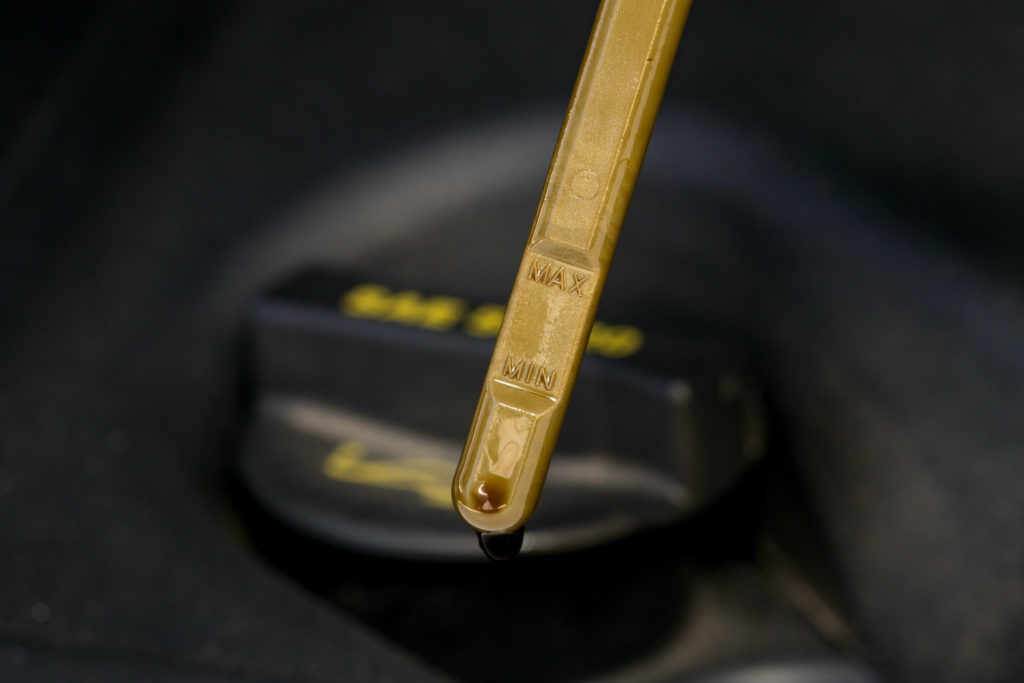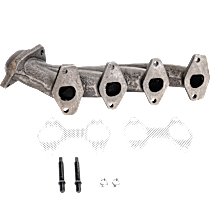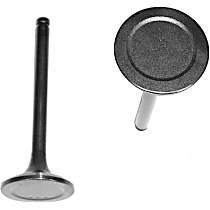An OBD-II code is designed to inform you about potential issues in your vehicle. But to successfully resolve it, you must first know what the logged code entails. If you’re having trouble figuring out what code P0080 means, you’ve come to the right place.
What Does the P0080 Code Mean?
Diagnostic trouble code (DTC) P0080 stands for “Exhaust Valve Control Solenoid Circuit High Bank 1.” It is set when the powertrain control module (PCM) perceives a potential problem with the signal from the exhaust control solenoid.
To be more specific, this code may be logged when the PCM detects that the signal and voltage from the exhaust control solenoid in Bank 1 is above specification. Bank 1 refers to the side of the engine where cylinder #1 is located, while the exhaust valve control solenoid can be found on the exhaust manifold side of the cylinder head.

On vehicles equipped with variable valve timing (VVT), the PCM can adjust the camshaft position, altering the timing of the exhaust and/or intake valves. The PCM controls the camshaft position by regulating oil flow (via a solenoid) to the actuator(s) mounted on the end of the camshaft(s).
The control solenoid that regulates oil flow is activated by a pulse width modulated signal (PWM) from the PCM. If the PCM determines there is an issue with the signal from the exhaust control solenoid in bank 1, it will log error code P0080.

Depending on the severity, other trouble codes may also be logged. Code P0080 is similar to P0078, P0079, and P0027.
Read our brief explanation about what the control solenoid does before proceeding with any DIY repair for P0080.
Note: The definition of code P0080 may be different depending on the vehicle manufacturer. Consult the appropriate repair manual or repair database for the exact code definition.

What are the Possible Causes of the P0080 Code?
P0080 is a generic code, so it can have several causes. Here are the most common:
- Faulty exhaust valve control solenoid
- Extremely low engine oil level
- Circuit issue, such as damaged wires or poor connections
- Failing PCM or software in need of an update
What are the Common Symptoms of the P0080 Code?
You may notice the following symptoms if you drive a vehicle with a stored P0080 trouble code:
- Illuminated check engine light
- Poor engine performance
- Poor fuel economy

How to Diagnose the P0080 Code
To avoid the possibility of engine damage, code P0080 should be resolved immediately. Because it has many possible triggers, diagnosing this code can be tricky.
Always follow the diagnostic procedure specified by your vehicle’s manufacturer because the process may vary per model. The steps for diagnosing a code P0080 on a Mitsubishi, for instance, may be different from testing for a code P0080 on a Toyota.
Refer to a repair manual for the appropriate diagnostic strategy. If you’re not familiar with auto repair, it would be best to leave the job to a mechanic.
How to Fix the P0080 Code
P0080 may share similar triggers and symptoms with other trouble codes. However, this does not mean it also shares the same fixes. All vehicles are different, so you should always refer to the factory repair information specific to your car before trying DIY repairs.
Code P0080 is a complicated code, so you should always refer to a repair manual or repair database before attempting any fixes. If you aren’t confident in your automotive repair skills, it may be best to enlist the help of a professional.
Getting a New Exhaust Valve Control Solenoid to Fix DTC P0080
It can be incredibly inconvenient to drive a vehicle that’s logged DTC P0080. Leaving the problem unaddressed can lead to costly complications, like poor fuel economy.
Fortunately, resolving the issue is often just a matter of replacing a faulty exhaust valve control solenoid if there’s nothing wrong with the wiring connections, oil levels, and PCM. Find the perfect replacement in no time with the help of CarParts.com.
The best part? You can get your hands on a new solenoid without leaving your home. Simply use your mobile device or computer to visit our website, fill out the vehicle selector, and change the search filters based on your needs. With just a few clicks, you can check out top-notch exhaust valve control solenoids that fit your ride and match your preferred brand, price, and specs.
We make sure to get our auto parts from only the most trusted manufacturers in the industry. On top of that, our warehouses are strategically located all over the US, meaning you can receive your order within days.
Spare yourself from the problems that come with a bad exhaust valve control solenoid. Fix DTC P0080 in no time by ordering replacement parts now with CarParts.com.
Products Mentioned in this Guide
Any information provided on this Website is for informational purposes only and is not intended to replace consultation with a professional mechanic. The accuracy and timeliness of the information may change from the time of publication.


 Exhaust Manifold
Exhaust Manifold
 Exhaust Valve
Exhaust Valve

















